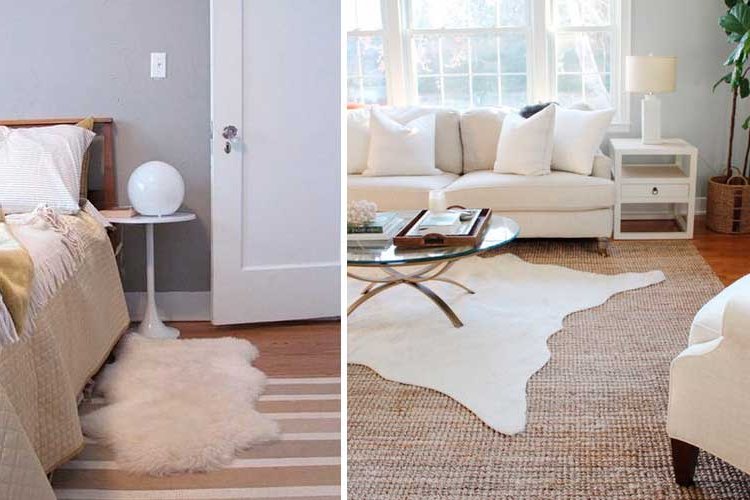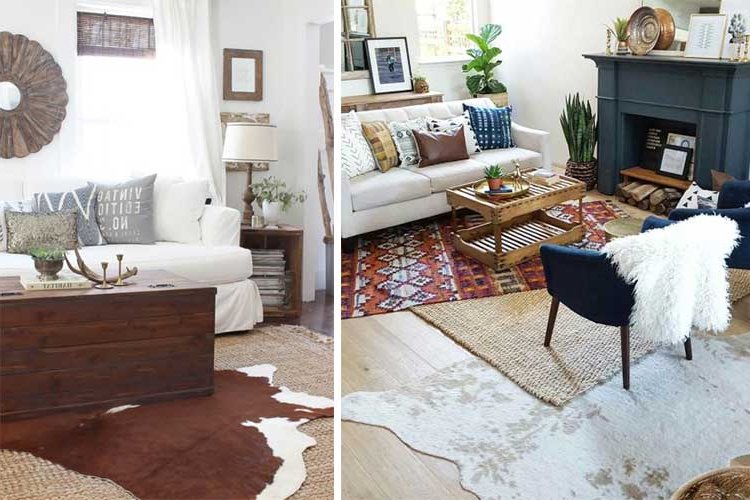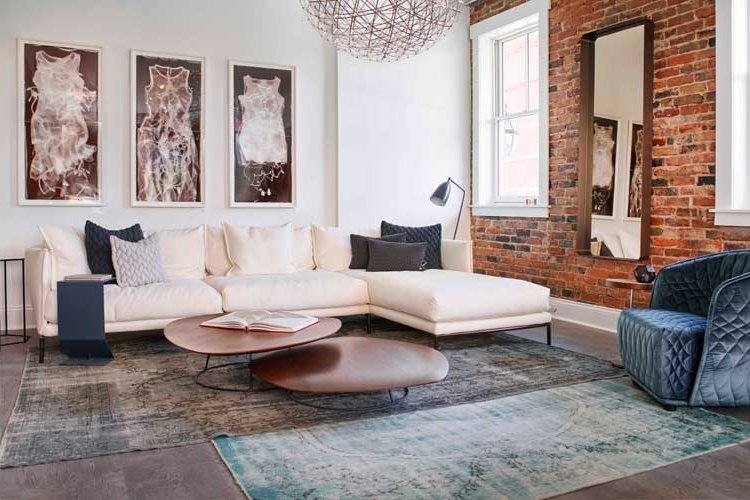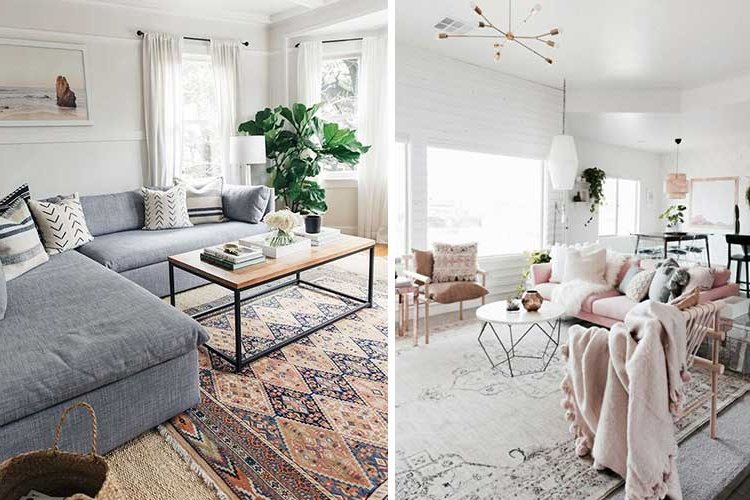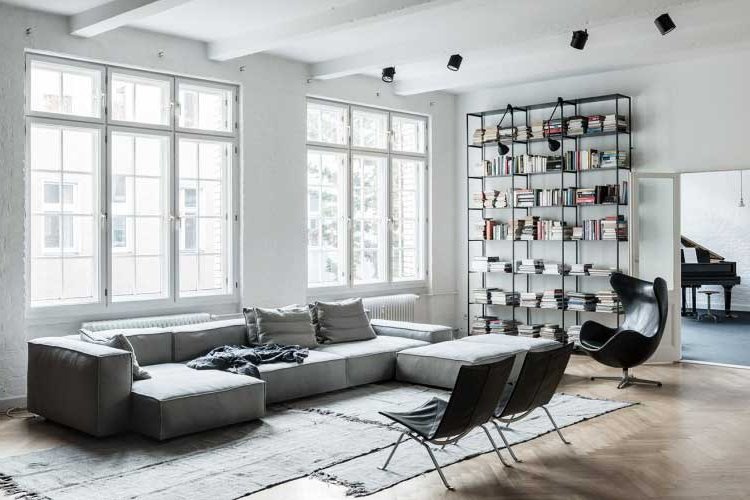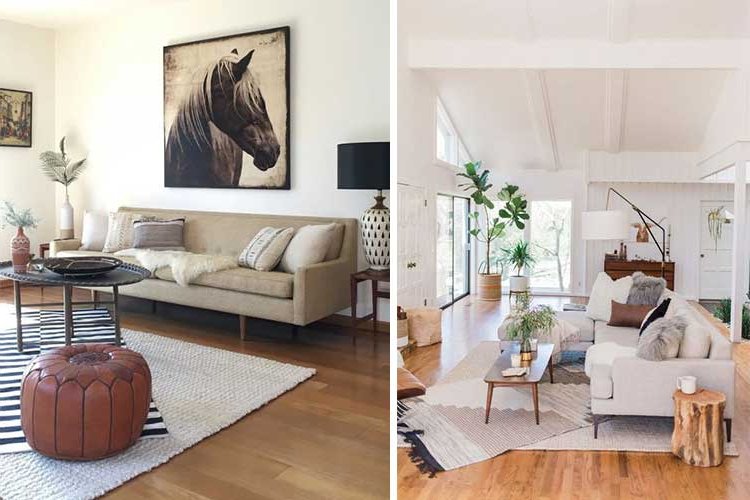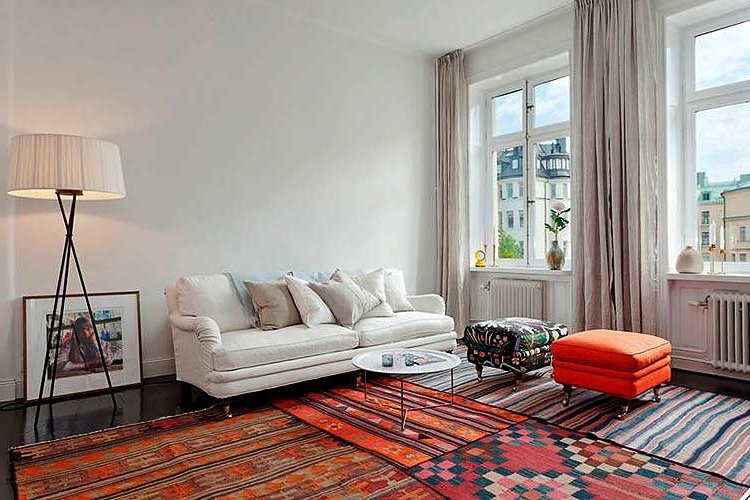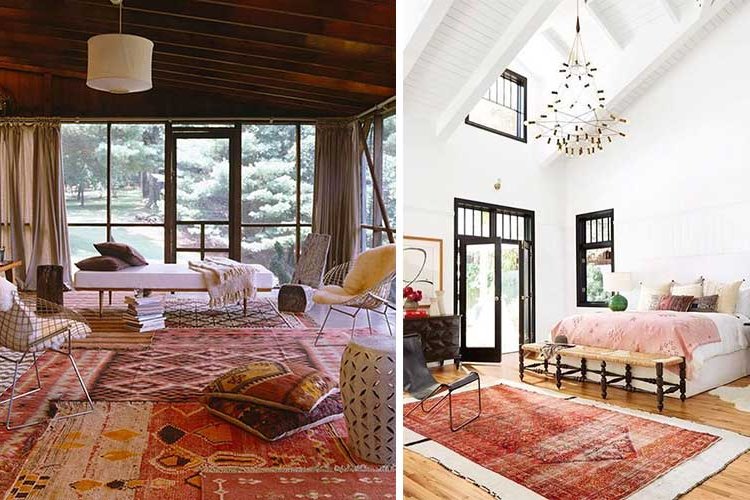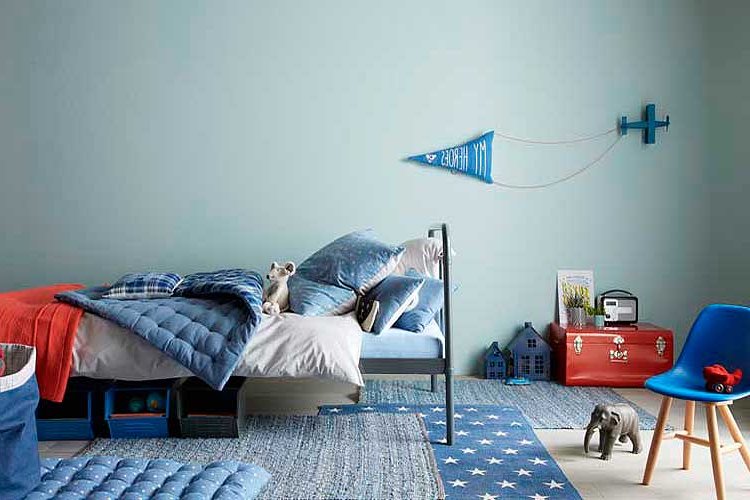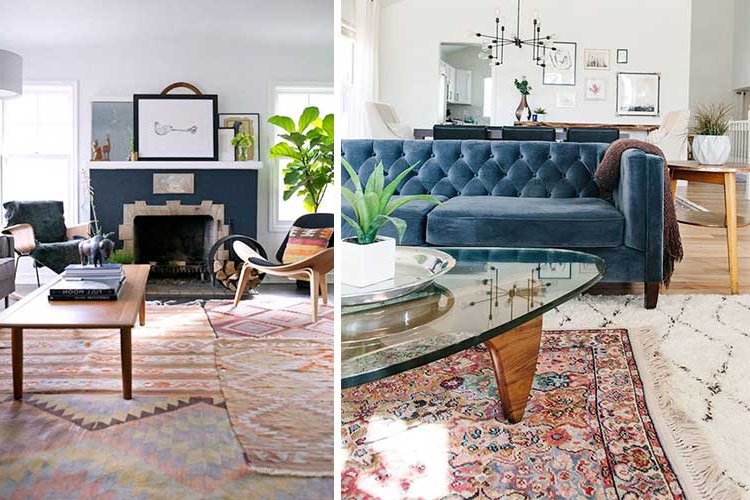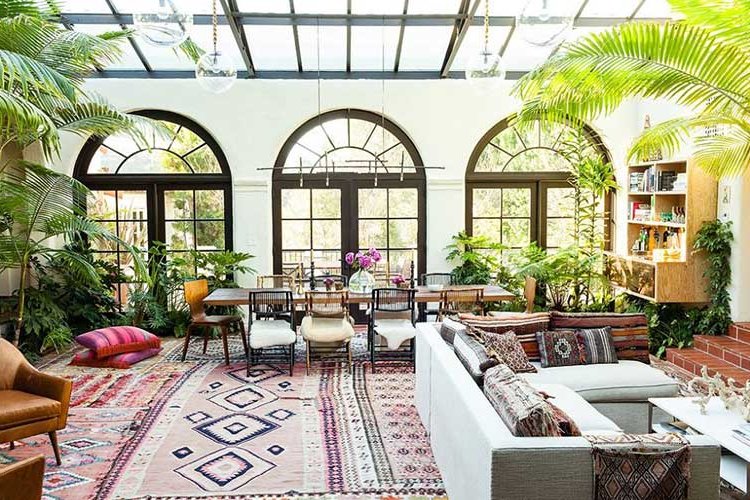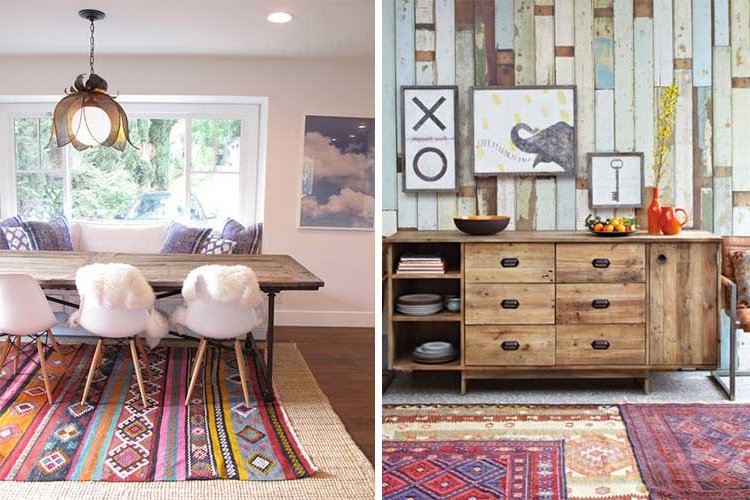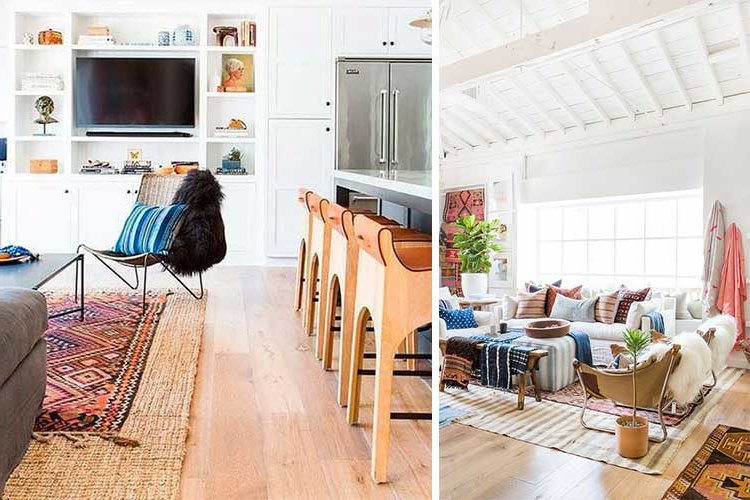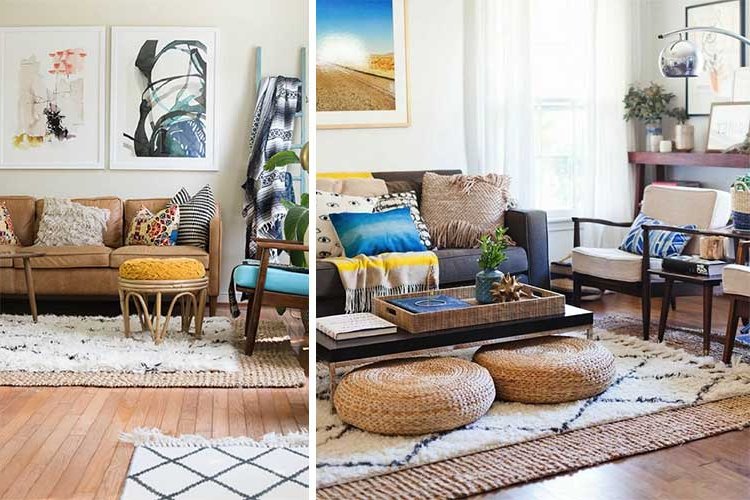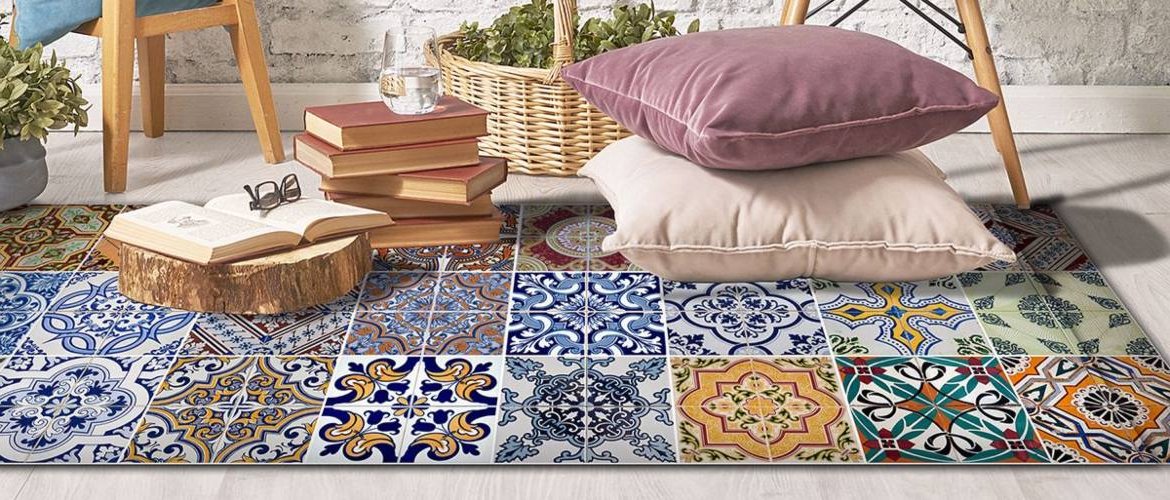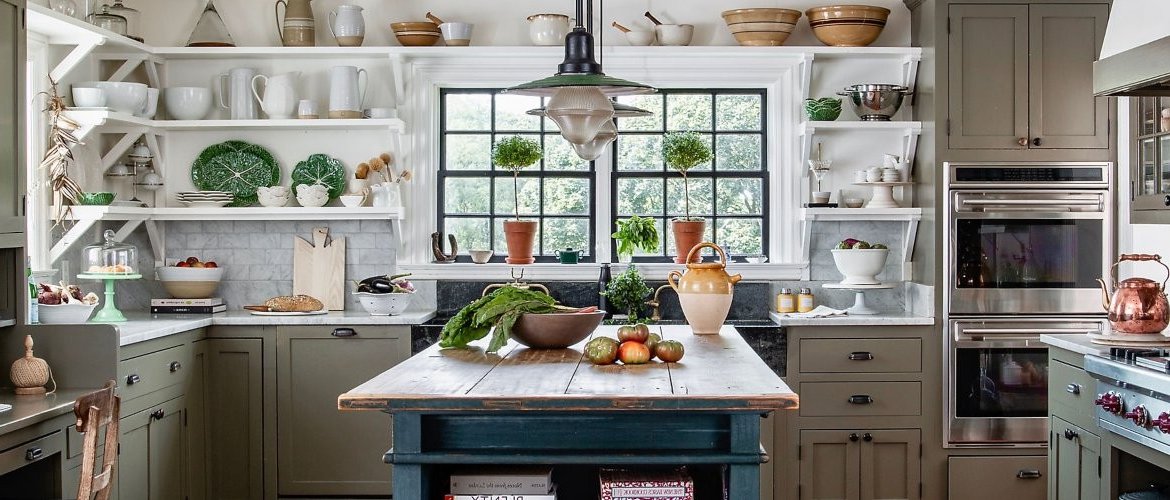Overlapping carpets: a fashionable trend
That the carpet is an essential decorative element, key in any interior design project, is something that few can doubt: it delimits areas, fills spaces that would otherwise be dull and is the ideal focus to bring that touch of style or color that any living room, bedroom or entrance is looking for.
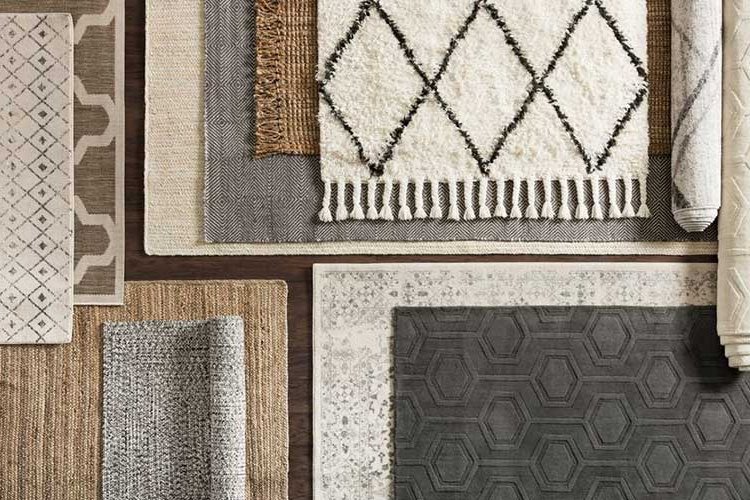
However, until now the usual trend when decorating with rugs has always been to use a single rug, large enough to cover the space to be filled. Whether long or short pile, wool or synthetic, thin or thick, neutral or colored, until now little thought has been given to the decorative possibilities of layering rugs on top of each other.
And yet, overlapping carpets have become one of the "in" trends of this year, gaining followers every day.
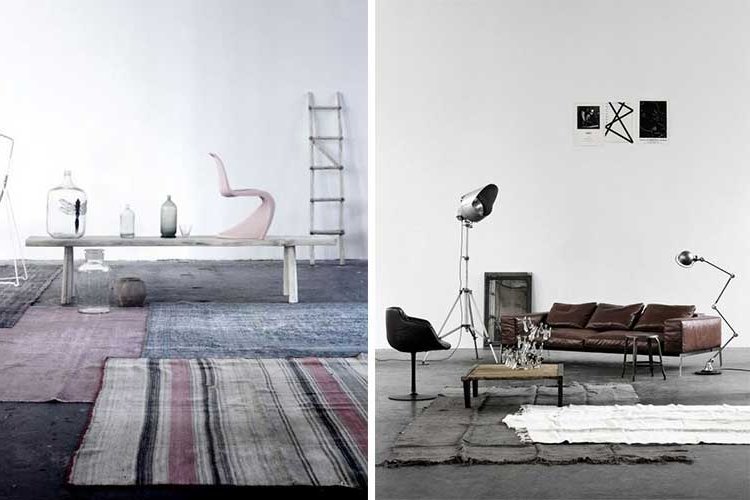
Among the advantages, they make it possible to cover large spaces with standard carpets without having to order them made-to-measure (with the consequent cost savings) and bring a lot of personality to an environment thanks to the particular play of volumes, textures and colors.
As disadvantages, not all carpets are suitable for this purpose (thick or long pile carpets should be avoided), they do not fit in all styles and in certain areas they can hinder the natural movement of furniture (e.g. when turning the wheels of a chair or buck in a home office or when sitting down and getting up from the dining table).
In any case, decorating with overlapping carpets is not as easy as it seems. You have to follow some guidelines and it requires a certain sense of aesthetics to properly combine shapes and shades, so let's see some guidelines and possibilities that offer us to use them in the right way:
1. Fine carpets
Using flat carpets is the first rule to keep in mind if you want to superimpose one on top of the other. Obviously, several thick rugs would be impractical when placing furniture, as they would unbalance the legs of tables and chairs, produce unaesthetic "mounds" on the edges and, in general, would be very difficult to place on top of each other,
So, free rein to flat rugs made of fabric, leather, wicker or rattan, synthetic or fine wool.
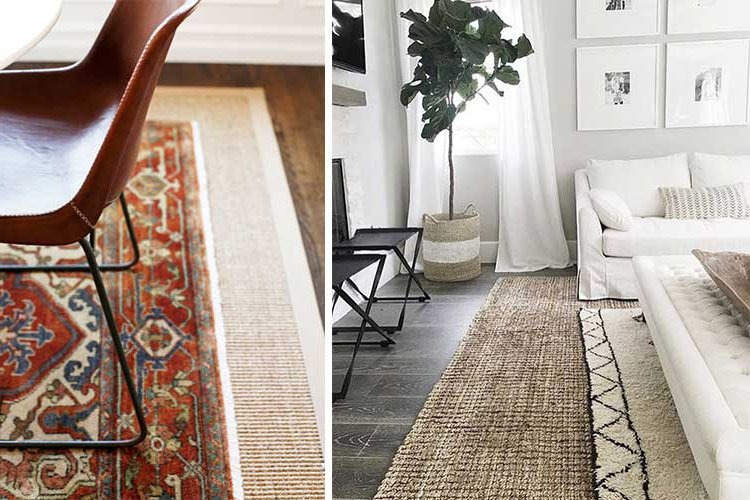
2. Watch out for style
Overlapping carpets are not suitable for all styles. The personality, strength and character that they give to the space and the sensation of "studied disorder" that they cause on a visual level make them unsuitable for the renovated classic style, where symmetry is one of the basic principles that would be broken with the overlapping, nor with the "Frenchified" shabby chic, where the materials used and the pile carpets do not match very well with the jutes and furs. Nor do they go well with purely minimalist styles, where an extra rug is an unnecessary element.
However, in their more neutral tones they are perfect for the Nordic style, especially when plain tones are combined with a geometric rug, and in their more colorful version they are ideal for the boho style or the ethnic style, which have in their DNA the mixture and fusion, becoming the natural habitat for this type of rugs.
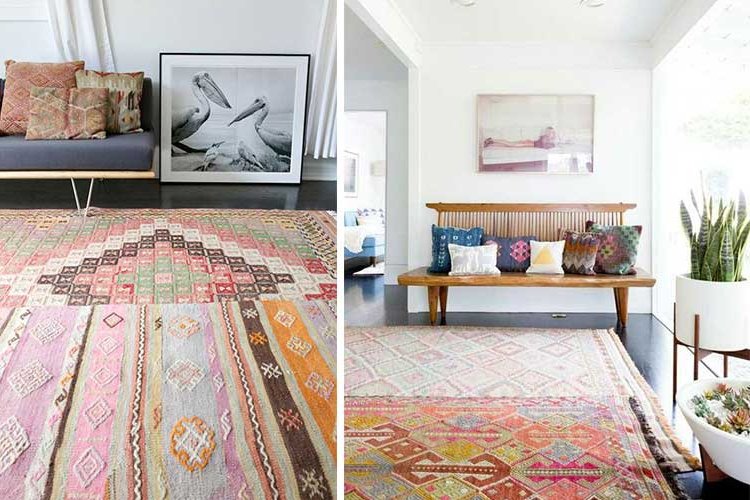
3. Combination of shapes
When decorating with overlapping carpets, the most common is to combine several rectangular carpets, mostly because they are the most present in the market and have such a variety of sizes, patterns and shades that it is very easy to get hold of them.
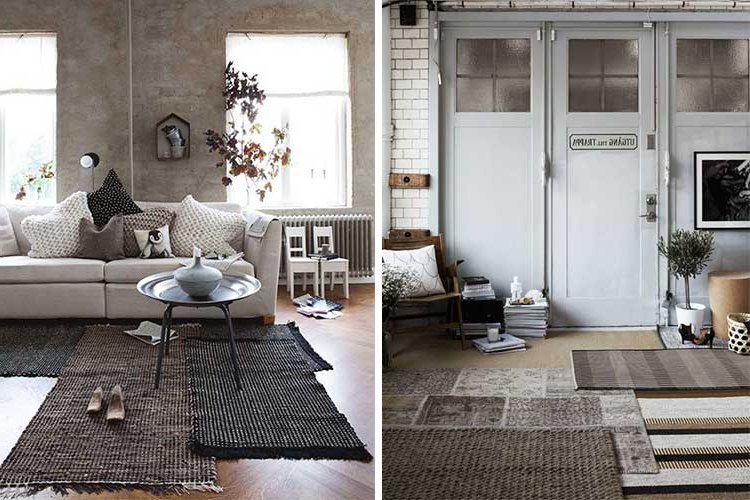
However, another widespread option is to place a large neutral rectangular carpet as a base and superimpose another cowhide rug, with that characteristic "Rothschild test" shape ;)
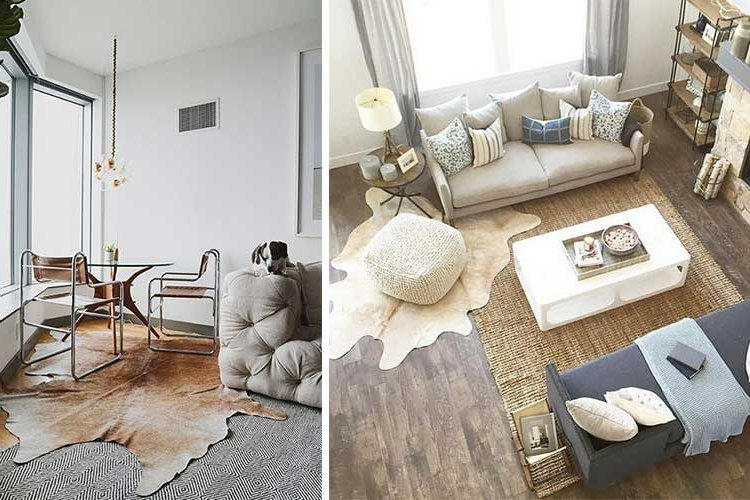
This option also includes the combination of rectangular carpets with circular, square or those that end in hexagonal geometric borders.
4. Combination of colors
The overlapping of shades is another point in favor of decorating with different carpets. In this sense, they can become the main color focus of the room...
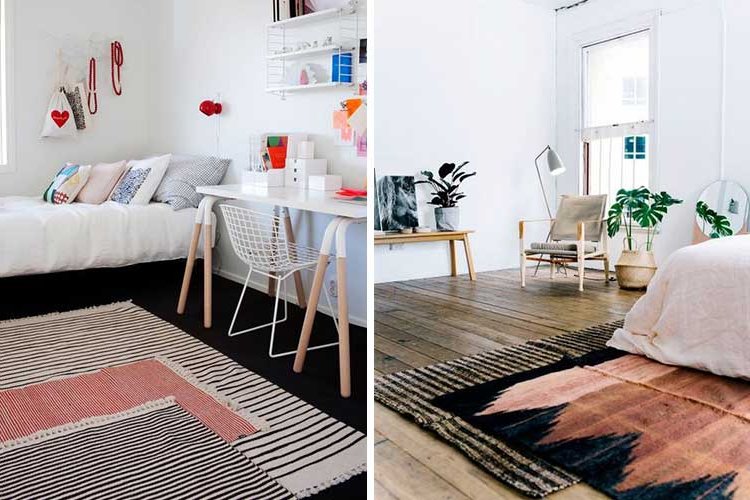
... or contribute to reinforce the range of colors already present in the furniture.
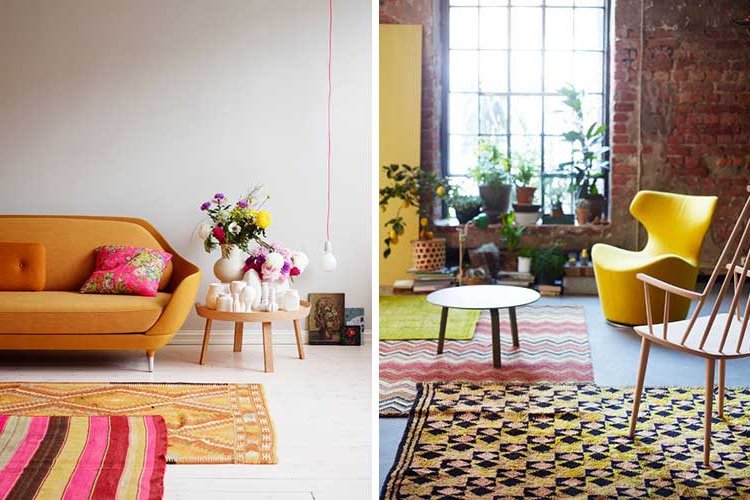
You can also tend to use a harmonious chromatic range in all the carpets or choose to mix complementary tones of different types. In this sense, if you are afraid of combining color well or you are afraid of making a mistake, use the same range when the colors are bright and dare to combine tones when they are pastel.
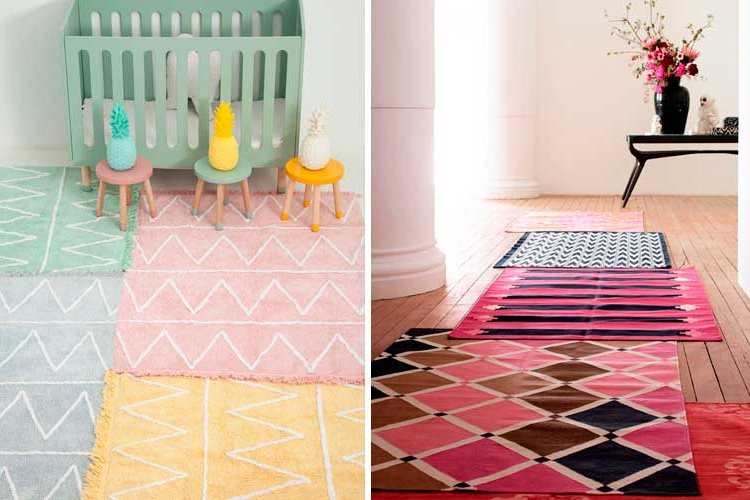
5. Combination of weaves and textures
In addition to the classic combination of wicker-leather (or coarse-soft) textures, we can give free rein to our imagination and combine plain rugs with geometric, striped with dotted or Persian patterns with each other.
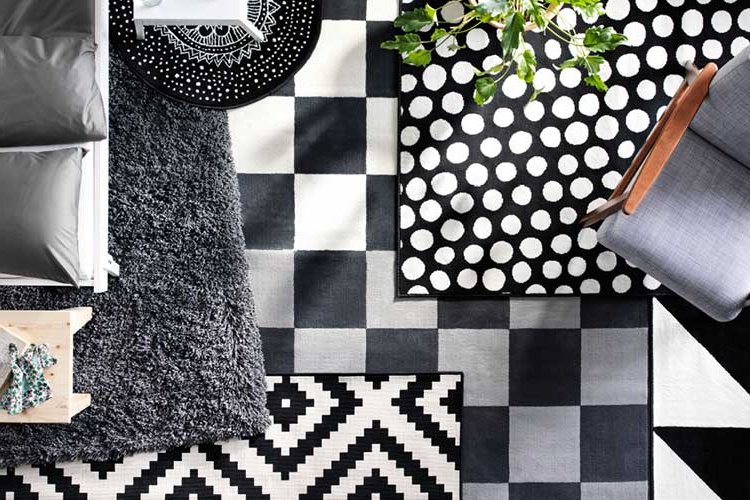
However, if you are afraid of making a mistake or you are afraid of "getting tired" when combining different patterns, choose to stay within the same chromatic range or the same pattern and their possible effects will be mimicked.
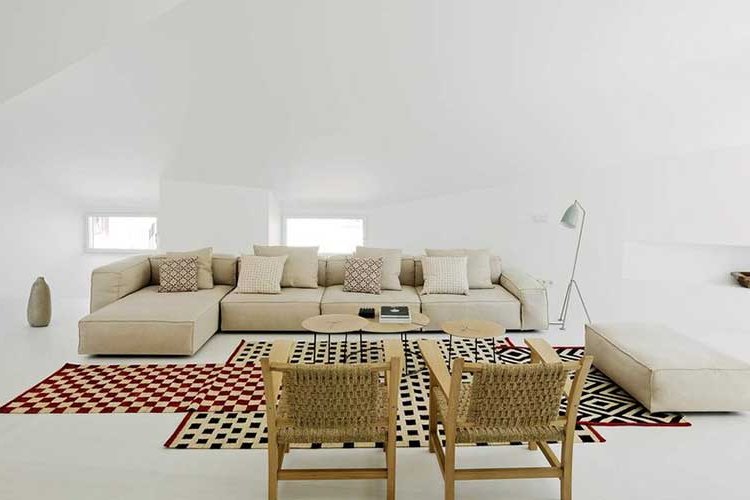
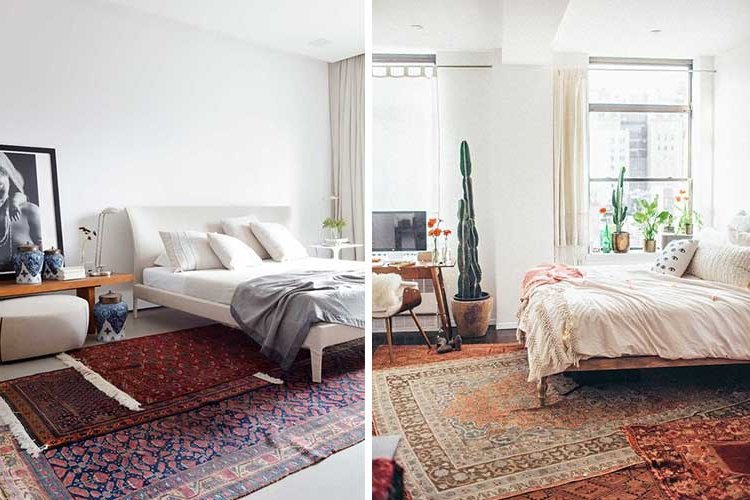
6. Types of overlapping
If we have so far dealt with colors, textures and shapes, there is another essential point to take into account: the way the carpets overlap.
In this sense, there are three basic trends, each with its own particular visual effect:
a) CENTERED CARPETS
In this case what is done is to superimpose a rectangular rug inside another of the same shape, usually a small one perfectly centered over a larger one.
It is the least risky option, and the most common in contemporary environments, as it dilutes the messy effect that this type of carpet usually generates, maintaining the neat appearance of "everything in its place".
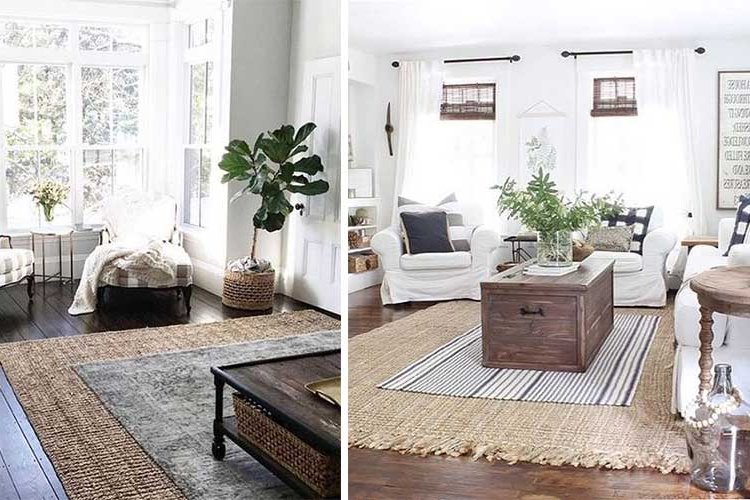
b) DISPLACED CARPETS
This option is based on placing rectangular carpets perpendicularly or parallel to each other, but offset from each other, as if they were rotating on a lateral axis rather than a central one.
The visual effect is somewhat messier than the previous one, but without being excessively chaotic.
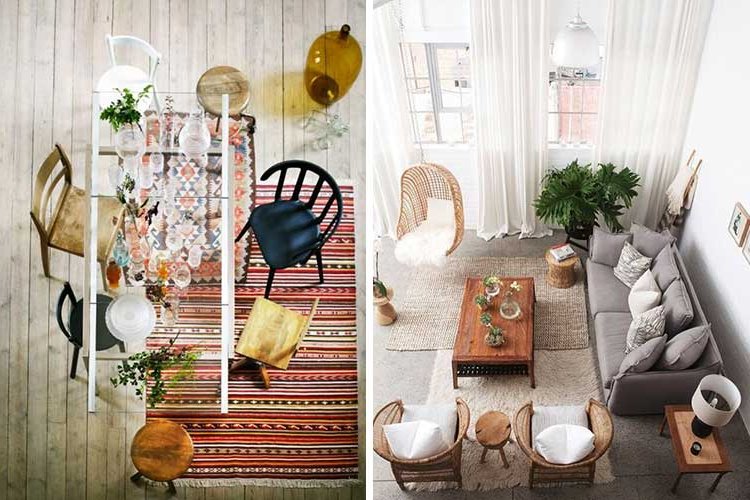
c) DIAGONAL RUGS
Any decorative element placed diagonally (a sofa, a sideboard, and of course, a room divider) gives the space a sense of dynamism and "uncoupling" that often becomes the main focus of the room.
With overlapping rugs this effect is somewhat softer, as they are directed to the floor, but they are ideal to give an informal touch or to provide a counterpoint to excessively tidy environments.
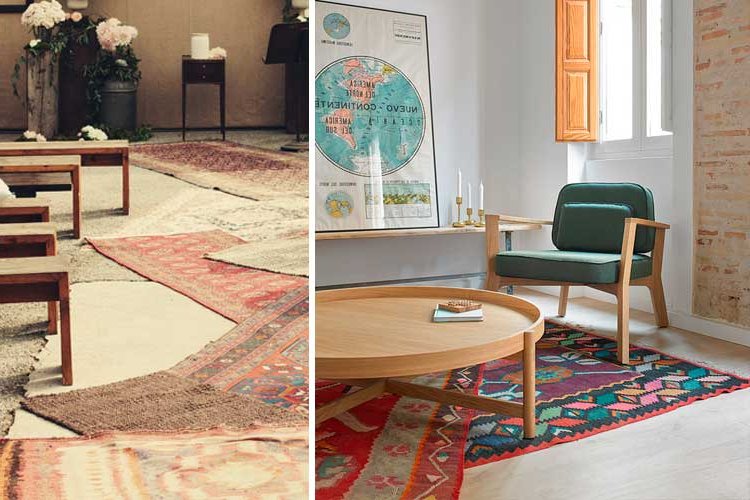
Anyway, as you can see, the possibilities of overlapping rugs are endless, and they become the ideal way to bring that personal and informal touch to the decor to suit the different seasons or the personal taste of each one.
Long live overlapping rugs!
